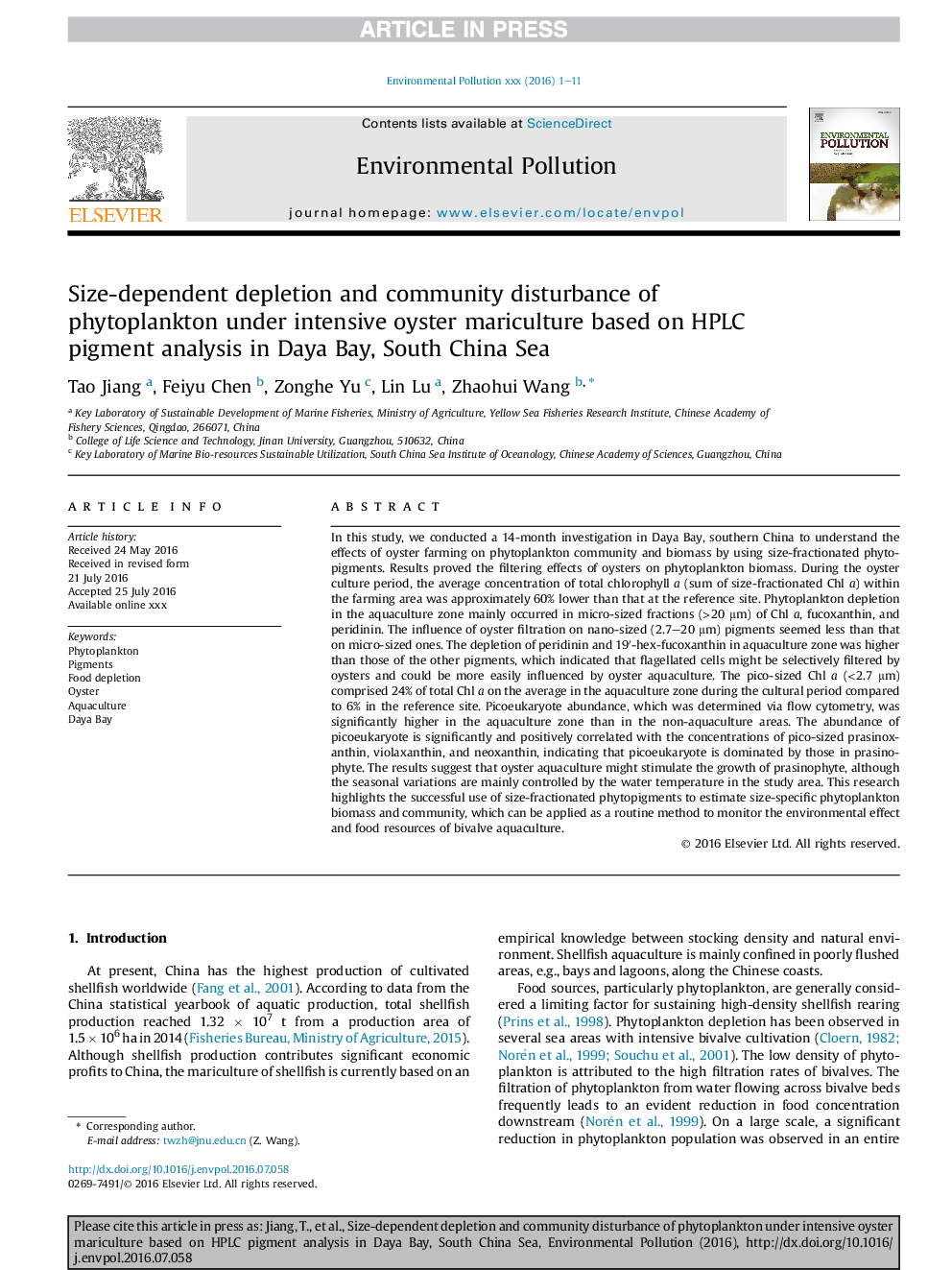| کد مقاله | کد نشریه | سال انتشار | مقاله انگلیسی | نسخه تمام متن |
|---|---|---|---|---|
| 8857855 | 1619154 | 2016 | 11 صفحه PDF | دانلود رایگان |
عنوان انگلیسی مقاله ISI
Size-dependent depletion and community disturbance of phytoplankton under intensive oyster mariculture based on HPLC pigment analysis in Daya Bay, South China Sea
دانلود مقاله + سفارش ترجمه
دانلود مقاله ISI انگلیسی
رایگان برای ایرانیان
کلمات کلیدی
موضوعات مرتبط
علوم زیستی و بیوفناوری
علوم محیط زیست
شیمی زیست محیطی
پیش نمایش صفحه اول مقاله

چکیده انگلیسی
In this study, we conducted a 14-month investigation in Daya Bay, southern China to understand the effects of oyster farming on phytoplankton community and biomass by using size-fractionated phytopigments. Results proved the filtering effects of oysters on phytoplankton biomass. During the oyster culture period, the average concentration of total chlorophyll a (sum of size-fractionated Chl a) within the farming area was approximately 60% lower than that at the reference site. Phytoplankton depletion in the aquaculture zone mainly occurred in micro-sized fractions (>20 μm) of Chl a, fucoxanthin, and peridinin. The influence of oyster filtration on nano-sized (2.7-20 μm) pigments seemed less than that on micro-sized ones. The depletion of peridinin and 19â²-hex-fucoxanthin in aquaculture zone was higher than those of the other pigments, which indicated that flagellated cells might be selectively filtered by oysters and could be more easily influenced by oyster aquaculture. The pico-sized Chl a (<2.7 μm) comprised 24% of total Chl a on the average in the aquaculture zone during the cultural period compared to 6% in the reference site. Picoeukaryote abundance, which was determined via flow cytometry, was significantly higher in the aquaculture zone than in the non-aquaculture areas. The abundance of picoeukaryote is significantly and positively correlated with the concentrations of pico-sized prasinoxanthin, violaxanthin, and neoxanthin, indicating that picoeukaryote is dominated by those in prasinophyte. The results suggest that oyster aquaculture might stimulate the growth of prasinophyte, although the seasonal variations are mainly controlled by the water temperature in the study area. This research highlights the successful use of size-fractionated phytopigments to estimate size-specific phytoplankton biomass and community, which can be applied as a routine method to monitor the environmental effect and food resources of bivalve aquaculture.
ناشر
Database: Elsevier - ScienceDirect (ساینس دایرکت)
Journal: Environmental Pollution - Volume 219, December 2016, Pages 804-814
Journal: Environmental Pollution - Volume 219, December 2016, Pages 804-814
نویسندگان
Tao Jiang, Feiyu Chen, Zonghe Yu, Lin Lu, Zhaohui Wang,